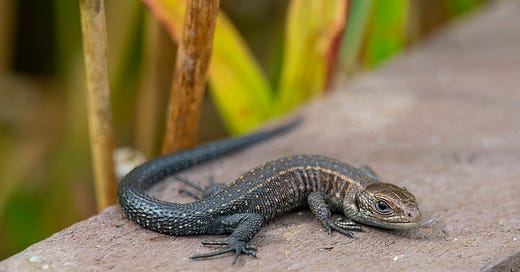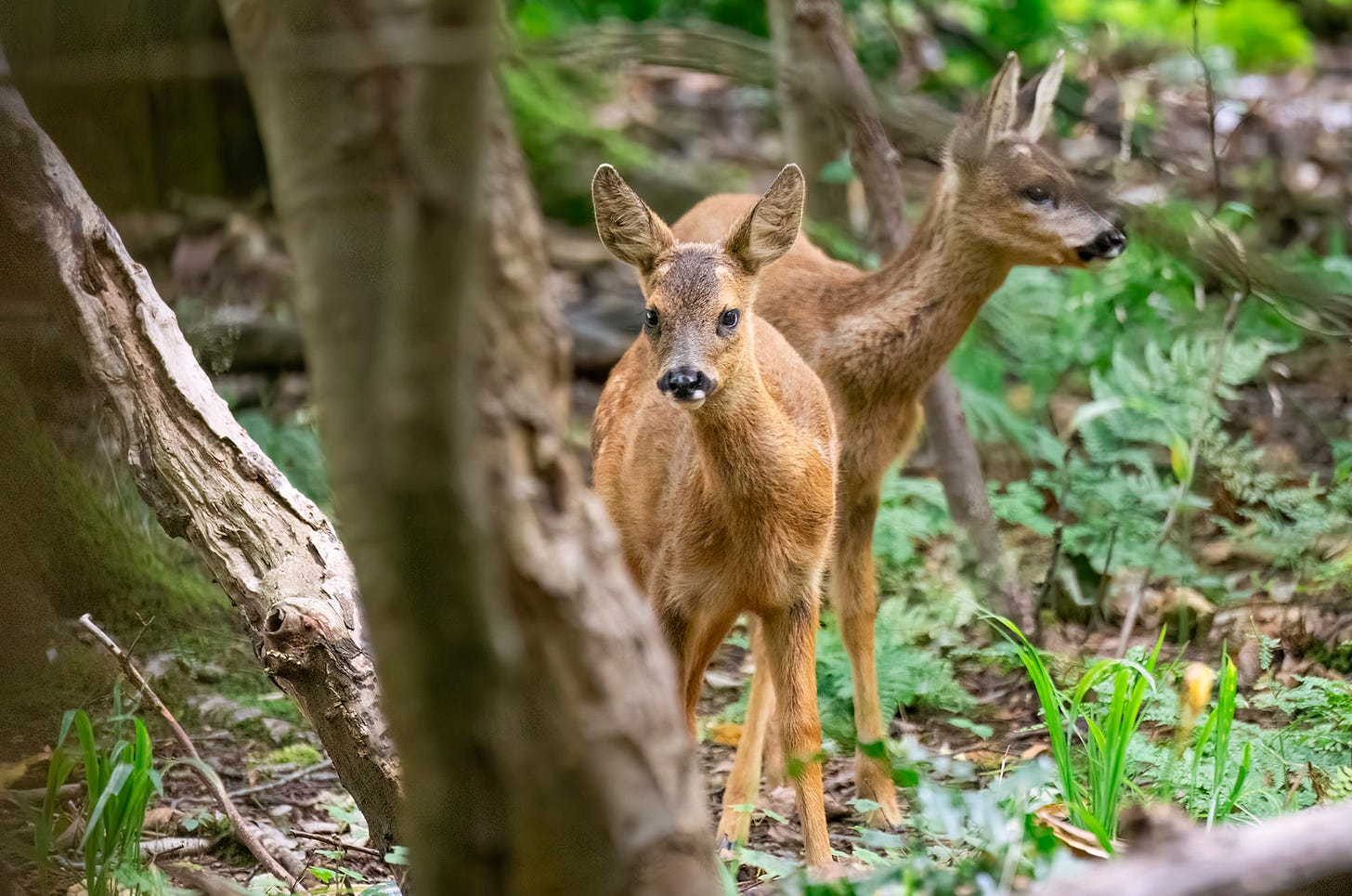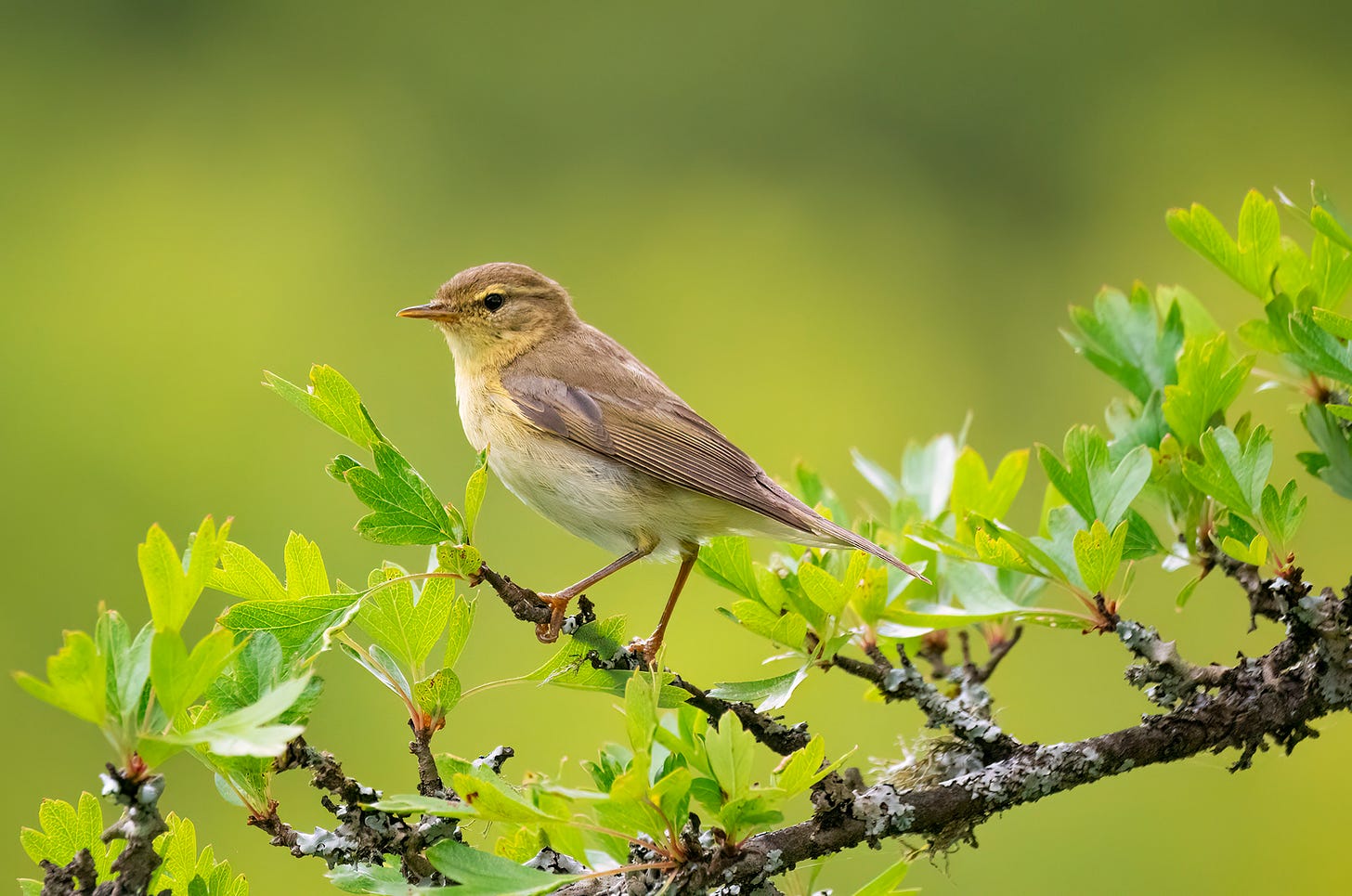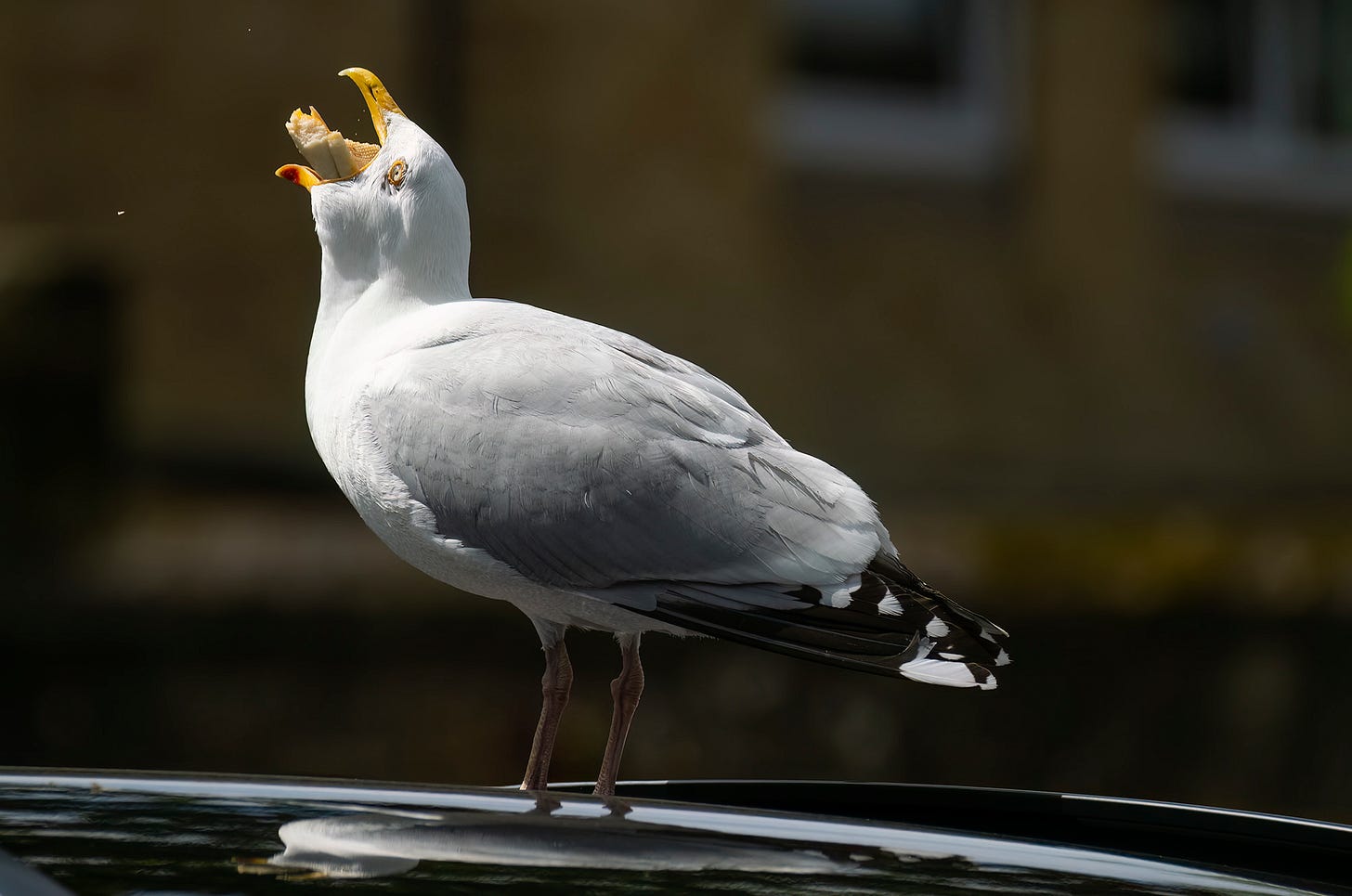August 2024 Viewfinder
Here be dragons...but a distinct lack of dragonflies in this month’s Opposite View Wildlife Photography newsletter.
Late summer can be a quieter time for wildlife photographers in the UK.
The small birds have finished breeding, and some leave for warmer climes. The seabirds, too, are departing from our shores. Any wildlife sticking around has plenty of green leaves to hide behind. So, at this time of year, if I am not busy pointing my lens at the new roe deer kids on my local patch (more on that below), I am focusing on Scotland’s insect life. Warm, dry, still days are perfect for photographing bees and butterflies.
Well, that’s when we get a summer, of course. This year, it has been a completely different story. We’ve had wind and rain followed by yet more wind and rain. Those warm, still, dry days have been few and far between. And with that lack of summer, there has been a distinct lack of one of my favourite subjects to photograph at this time of year – dragonflies and damselflies. The usually reliable wetland locations for seeing these fascinating creatures have been quiet. Temperature affects dragonfly activity levels and, as it also takes a lot of energy to fly to find food or a mate, I guess the cool and breezy summer we’ve been having explains the lack of sightings.
That was the case when we visited Flanders Moss National Nature Reserve at the beginning of the month. This vast peatland habitat is usually a great place to spot dragonflies and damselflies in summer. While the sun came out shortly after we arrived, the strong wind gusts must have kept them in hiding. Any small birds that ventured out across the bog were blown away – probably in the opposite direction to which they intended. So, the skies remained quiet throughout our visit.
The boardwalk around the reserve, on the other hand, was a literal hotspot for common lizards. I hoped to see one or two of these beauties basking, but we saw many more than that. Sat down on the boardwalk to capture images from a lower perspective, I fully appreciated why the lizards were out sunning themselves; my bottom was toasty despite the cold, strong winds. The grass blowing around made for some interesting focusing issues when photographing the lizards. But, on the whole, they stayed still, which helped me out. Using back button focus prevented the camera from locking on to the waving vegetation.
The common lizard is an unusual reptile because, rather than laying its eggs, it incubates them inside its body and effectively ‘gives birth’ to three to eleven young in July. We timed our visit to Flanders Moss perfectly – not just because the sun made a rare appearance but also because the tiny, darker coloured, young lizards were easy to spot and photograph. There may have been a lack of dragonflies, but these little dragons more than made up for it. I’ll leave you with a photo of one of the teeny juveniles on the boardwalk.
Best wishes,
Rhiannon
Opposite View Wildlife Photography
Through my lens
New (roe) kids on the blog
Summer in the woods can be a relaxing experience. The thick green canopy protects from the harshest of the sun's rays and provides cover for the small birds while they shed and regrow their flight feathers. Shafts of sunlight highlight an array of winged insects dancing on the lightest breeze. There is the distant mewling call of buzzards soaring above the trees in an azure sky.
But in all this serenity after the frenetic wildlife activity of spring, it can be easy to overlook the excitement of new life concealed in the shadows. If it hadn't been for my thermal imaging monocular, I would have undoubtedly missed my first opportunity to see the new faces on my local patch - twin roe deer babies.
In this blog, I share images and footage of the new roe deer kids on my local patch and explain how I approach each encounter to avoid disturbing them and their mother.
Species spotlight
Willow warbler - the melodic migrator
An olive-brown and creamy flash in the branches is the first sign, and then it’s a waiting game. Will this slender, streamlined bird – perfectly camouflaged in the spring and summer foliage – open its beak and sing?
You see, the willow warbler is a small, delicate bird with green-tinged upperparts and pale yellow underparts. But the chiffchaff is also a small, delicate bird with green-tinged upperparts and pale yellow underparts. The willow warbler has a more elongated primary projection (the distance the wing feathers extend past the bird’s body) than the chiffchaff, giving it a slightly longer-winged appearance. But that’s not an identification feature you’re likely to be able to work out in the field – at least, not if you’re me. You could try to identify the willow warbler from its paler flesh-coloured legs, compared to the chiffchaff’s dark grey legs, but good luck getting it to sit still long enough on a prominent perch to get a good enough view of this feature. No, the best way to tell a willow warbler from a chiffchaff is their wildly different songs.
In this blog, I explain why the willow warbler is a tricky bird to spot and share how to identify and photograph this singing summer visitor.
And finally…
I recently posted this image of a herring gull demonstrating the biting off more than you can chew idiom on my social media channels. The description I shared with it generated some unexpected positive comments.
With all the bad press that gulls get in the UK during the summer, I thought I’d share it again here and ask for your thoughts on the emotive subject of gulls. Is there anything we can do as wildlife photographers and nature enthusiasts to help reduce the human-gull conflict?
What do you think? Please let me know in the comments.
Here is what I posted with the image:
Firstly, I want to point out that the cheese and ham baguette it was busy trying to devour wasn't snatched from anyone - it was thrown on the ground by a child, and this gull was the closest and speediest to react.
I watched it make several attempts to swallow its prize - all of which looked pretty painful! You may be wondering why it didn't try and break up this huge meal rather than gulping it down in one go. Well, that would be a risky strategy considering the number of other gulls in the area. We accuse gulls of stealing food from us and in extreme cases accuse them of being "evil", when kleptoparasitism of food is perfectly acceptable behaviour in gull society (although not in ours). So, this individual simply understood that if it dropped its dinner, it was fair game for another gull and decided it was safer to attempt downing it in one than risk losing it. If you watch gulls, you'll notice that much of what they do is based on risk vs reward. So, if you keep an eye on them and eat and dispose of your food responsibly, you're unlikely to get ‘attacked’ - the risk of trying to take your food wouldn't be worth the reward. Unfortunately, the more people that drop food and demonstrate that humans are a good food source, the harder it is for our two species to happily coexist. It's definitely humans that are the problem here, not the gulls!
It's worth reiterating that both lesser black-backed gulls and herring gulls are on the UK Birds of Conservation Concern list, with lesser black-backed gulls amber listed and herring gulls red listed. The constant bad press these species receive doesn't help. Despite all British gull species being protected - and it being a criminal offence to kill or injure these species and destroy their eggs or nests - there are still plenty of reports of members of the public harming and killing these birds.
Keep in touch
Thanks for reading this! If you have any comments or questions, opportunities for photography or if you would like to use any of my images, please leave a comment. I’d love to hear from you.
You can also follow me on:







